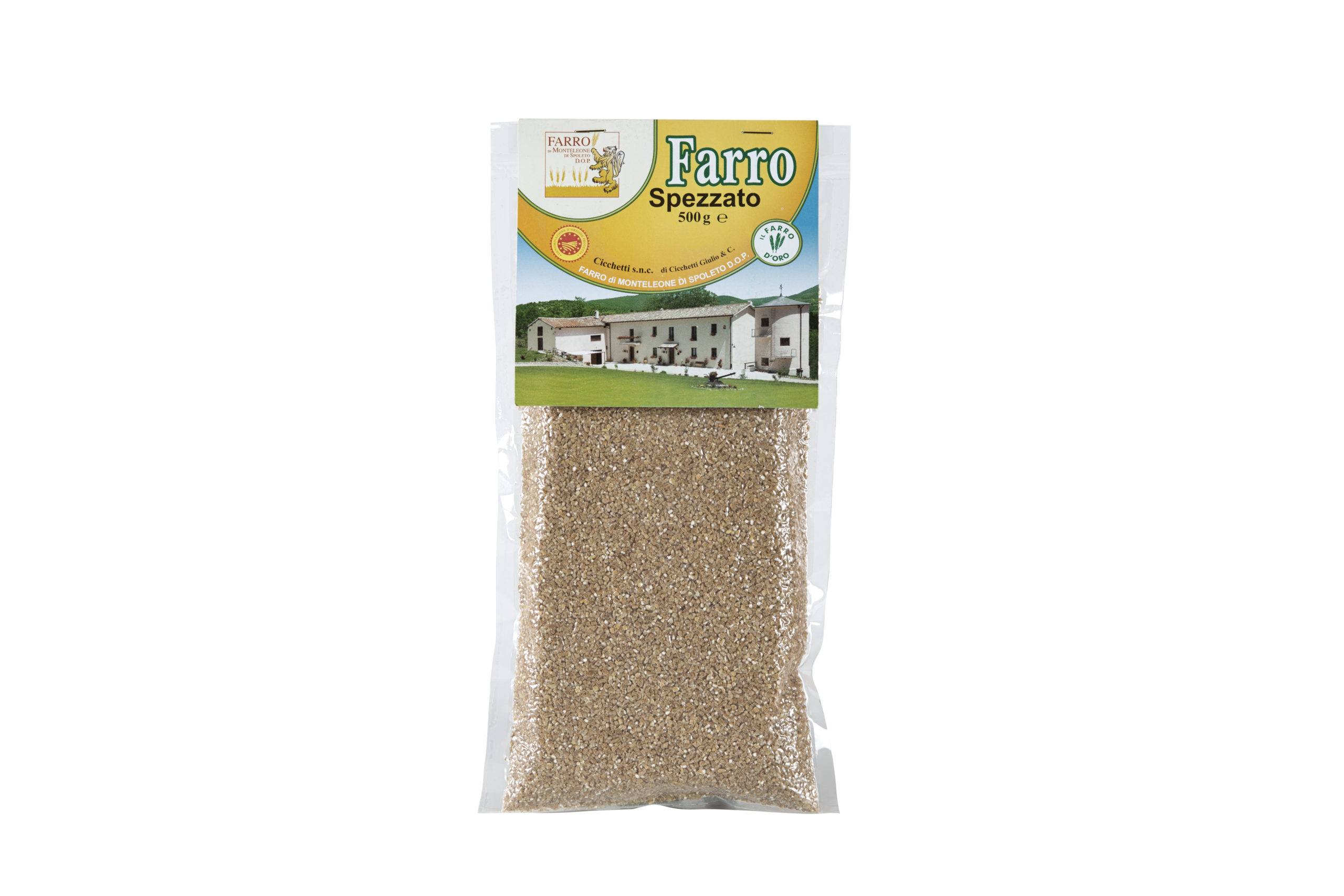Farro Cicchetti – Il Farro D'Oro
Farro Cicchetti – Il Farro D'Oro

In order to maintain a measurable and controllable land with the aim of defining and preserving the characteristics of the product, it is important to take into account geographical, climate and soil factors.
The cultivation technique is the traditional one, in use since hundred of years. The main work on the land is in the Autumn or during the Spring, with harrowing and sowing taking place from 1st February to 10th May, according to the weather. Climate, ground and seed are typical and exclusive to the valley of Monteleone di Spoleto, yielding unique qualities compared with those obtained in other areas of the same altitude in the same Nera Valley.
In addition, there are some areas that can be considerated the same with respect to the product that they yield: these are produced at the same altitude, direction facing towards the valley of Monteleone di Spoleto.
The local population of spring spelled is represented by the typical spelled of Monteleone di Spoleto.
Its diffusion, still considerable during the Middle Ages and up to the last century, was significantly reduced in the twentieth century following the increase in the production of bare wheat considered more productive. However, within cooler and less favored areas, such as that of Monteleone di Spoleto, spelled continued to be economically competitive with respect to wheat.
In Monteleone di Spoleto, inside the "tomb of the cart" (Etruscan tomb dating back to the sixth century BC) cereals were found, including spelled kernels, belonging to the same species that is still cultivated in Monteleone di Spoleto or Triticum dicoccum. . This archaeological find provides evidence of the widespread diffusion of spelled within the cereal crops cultivated at that time. In the territory of Monteleone di Spoleto, archival research has brought to light documentary evidence showing that the cultivation of spelled was widely practiced since the sixteenth century. Its use has remained within local agricultural practices up to the present day.
Traditionally, in the typical soups of the area, Monteleone di Spoleto spelled is used as wholemeal, pearled or semi-pearled and finally broken